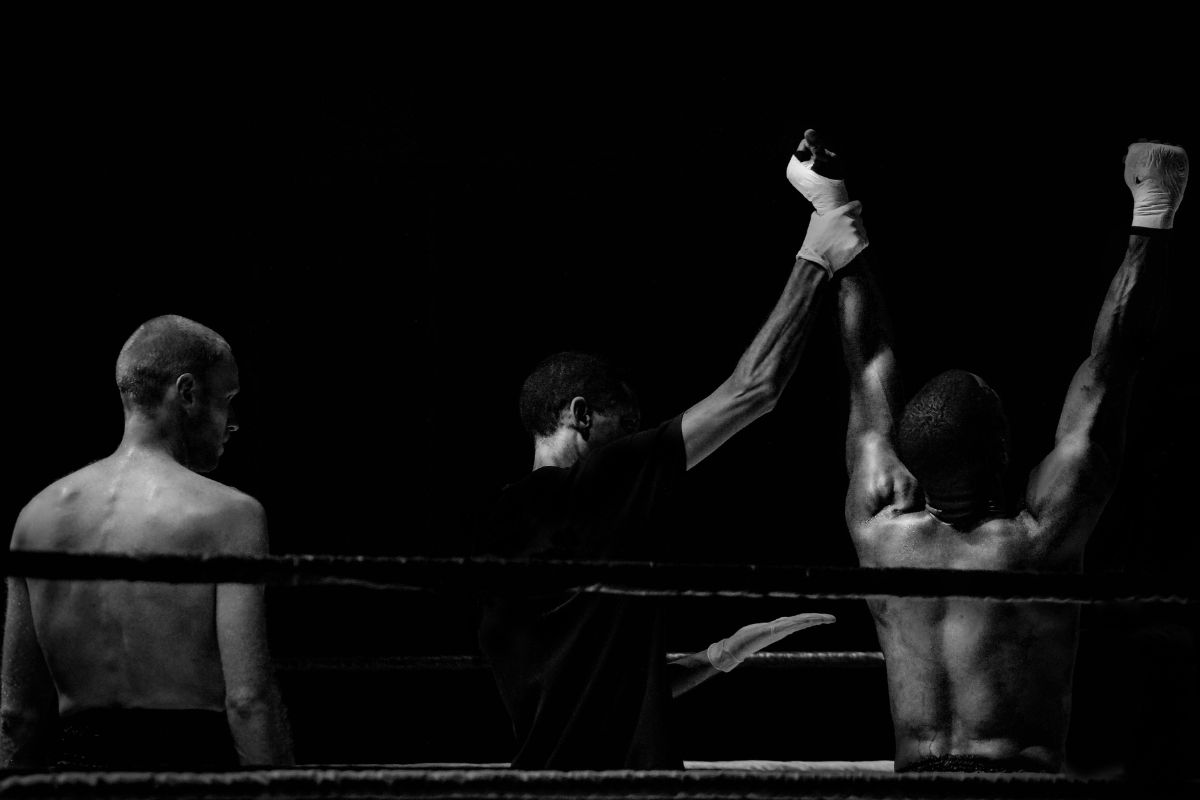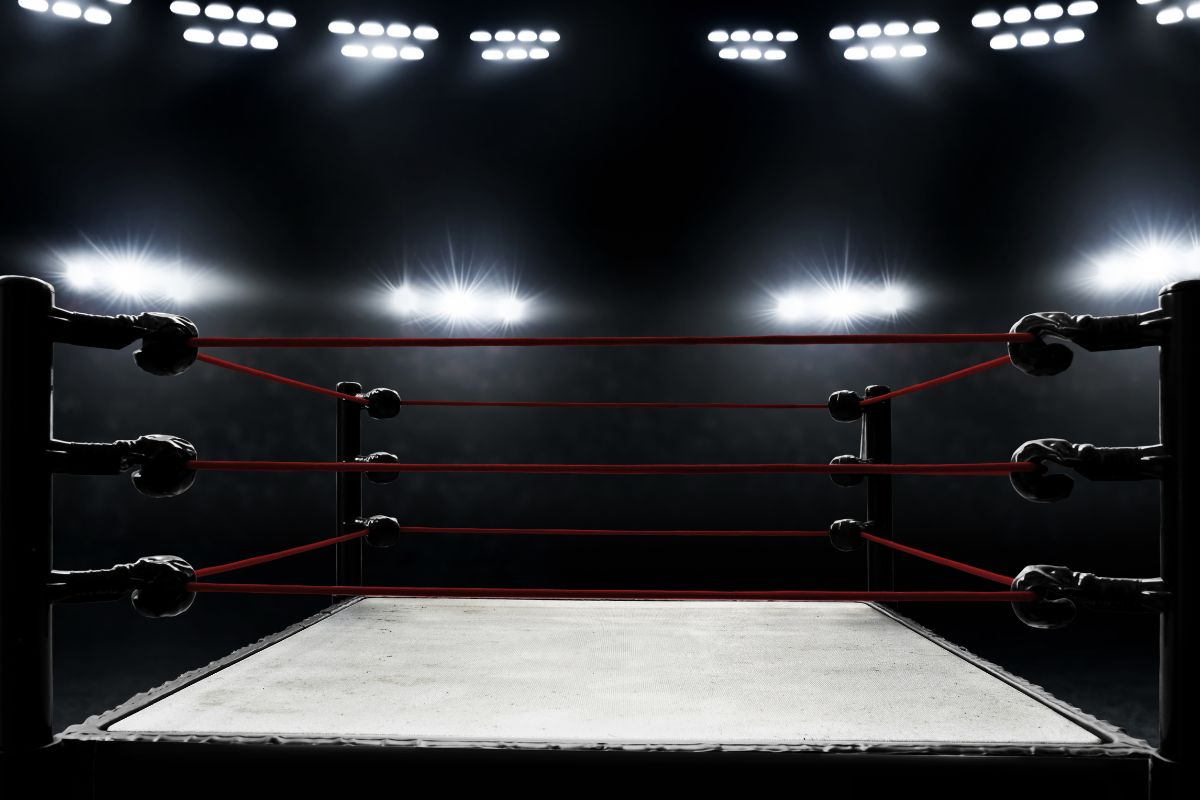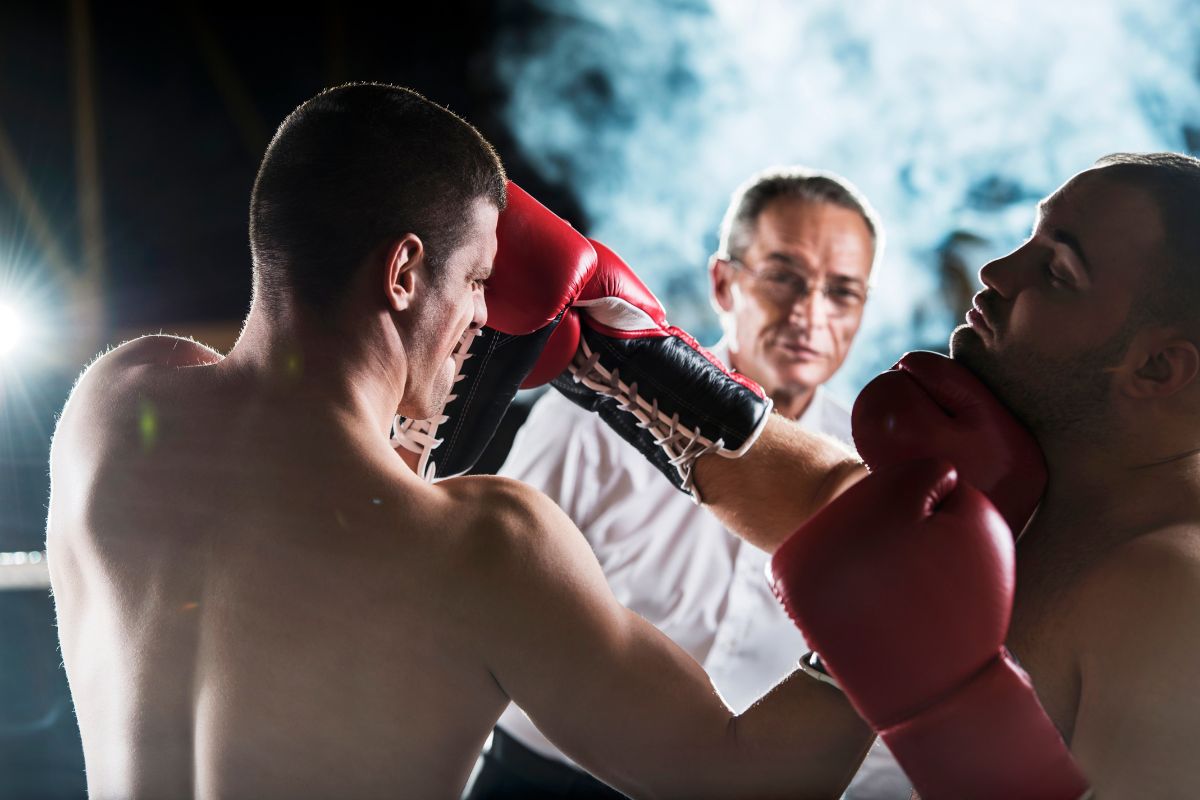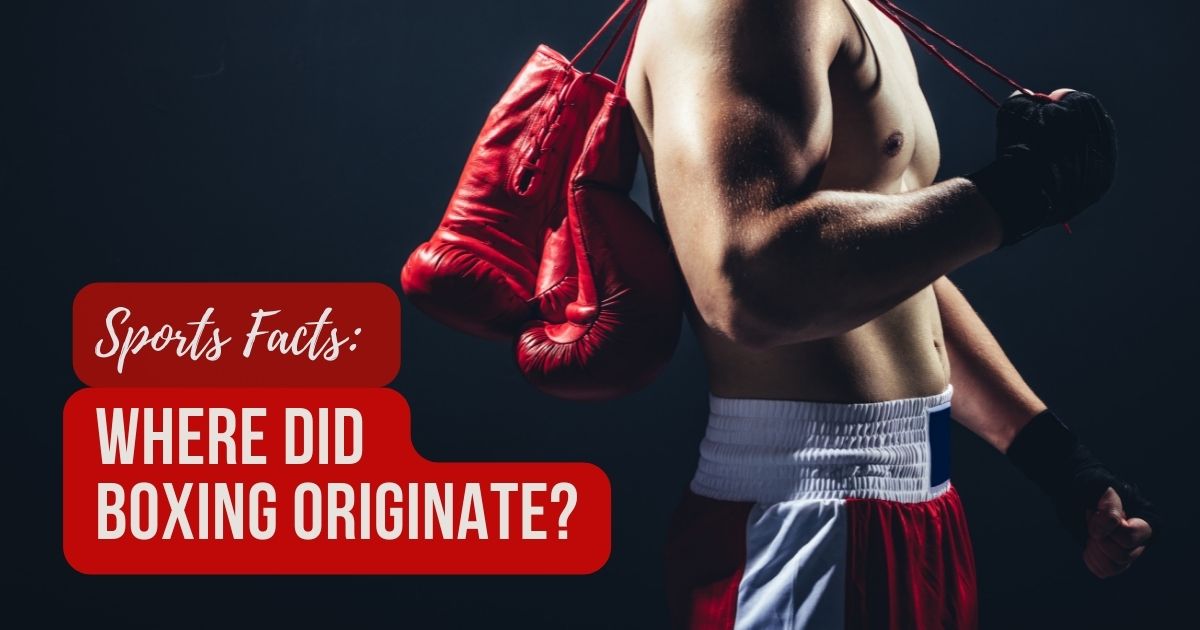Who Invented Boxing?
And where did boxing originate? Historians have found numerous depictions of Egyptian art that depict early forms of boxing, wrestling, and grappling between people.
The exact origins of who invented boxing are largely unknown, and the belief is that the ancient Egyptians were the first to develop a form of hand-to-hand combat as a form of self-defense.

When Was Boxing Invented?
Wrestling has been a favorite pastime among humans since our ancestors lived in caves. The origins of boxing as we know it today are from the ancient civilizations of Egypt and Greece.
Both cultures had different variations of fist-fighting sports with rules similar to modern boxing.
The sport of boxing has been around for more than 2,500 years, and the sport originates from ancient Greece and Egypt.
There are diagrams showing that ancient Greeks had a form of primitive boxing. One of the earliest references to an old Greek boxing match is an image on a vase dated around 690 BCE.
Boxing became a competitive sport in the modern Olympics in 1904. Since then, boxing has grown globally, with amateur and professional and youth leagues existing in almost every country worldwide.
However, most historians agree that the English are the ones who invented modern boxing, known as western boxing or pugilism—also known as prizefighting or fisticuffs—where modern boxing originated in 18th century England. Boxing was typically a sport for the upper class in England.
During this era, boxing was a way to settle disputes among the wealthy, and the rich patrons would place large wagers to support their pugilists.
Where Did Boxing Originate?
Boxing as a modern-day sport originated in England during the late 18th century. Although there is no evidence of the invention of boxing, the English get credit for creating boxing as the sport it is today.
The first recorded boxing match, in 1681, was between two British aristocrats. This was when boxing was invented when King George II proclaimed boxing a royal pastime in 1719.
Boxing was brought to the United States by English colonists. It was also during this time that boxing acquired the name “pugilism,” defined as a sport of fighting with fists, derived from the Latin word “pugil,” meaning fist.
The Evolution and History of Boxing
Boxing history as a sport dates back to ancient times. The Ancient Greeks who invented boxing did so as a sport and as a way for people to defend themselves from attackers.
Initially, any two people could fight without mercy as there was no health and safety measure or weight divisions. The fights were bloody and would only end if one fighter conceded defeat or could no longer continue.
With the invention of gloves, boxing became more popular, and professional matches in London in the 18th century.
The popularity of boxing continued to grow throughout the 19th century, and by the early 20th century, it had become one of the most popular sports in America and elsewhere.
However, as with other sports that were popular at the time, there were many negative stereotypes surrounding boxing.
These stereotypes included the idea that all boxers were criminals or that boxing was just a violent way of settling disputes between men who disliked each other. As a result of these negative stereotypes, many people were reluctant to get involved in boxing as a sport or a career choice.
In modern-day, boxing has gained so much popularity and has become part of pop culture. In addition, the prize money also increased, with fighters earning millions to be part of a fight.
There are three primary forms of boxing, amateur and professional, and they differ in ability and experience as well as the rules. Here are the other differences between the different types.
- In amateur boxing, a fighter has eight counts to recover; there is no count in professional boxing.
- There are five judges in amateur boxing, and whoever throws the most number of straight punches wins the round. While professional boxing has judges, each round’s winner gets 10 points. In professional boxing, the goal is to knock out the opponent.
- Amateur boxing has less time consisting of three rounds, and boxers must use quick jabs and be fast on their hands and feet. Professional boxing is slower with 12 rounds. Having a longer time allows fighters to use big shots and quick knockouts.
- The ring size for amateur boxing ranges from 6 – 20 square feet. Professional ring sizes vary.
- The equipment amateur boxers must wear includes headgear, padded gloves, vests, and mouth guards. Professional fighters only wear mouthguards and gloves.
- Amateur boxers receive a set amount paid out after the match. They can also work and earn money through sponsors but cannot ask for money from the organization. Professional boxers don’t get prize money but get paid by their sponsors, and they do not win; or lose money based on the result of a fight.
- The only additional rule for professional boxing is that fighters wear boxing gloves while in the ring. Professional boxers typically fight in a ring that is 16 feet square.
Turning into a professional boxer is easy. It involves getting a pro license by passing a physical test.
Boxing is a dangerous sport that has led to many injuries and even death in some cases. Other common health problems among boxers include brain damage, hearing loss, heart disease, and liver damage.
What Does Boxing Mean?
Boxing typically involves two people in a ring attempting to knock each other out by hitting them with fists. However, boxing can also refer to martial arts that combine kicking and punching or self-defense using one’s fists.
Boxing typically involves two people in a ring attempting to knock each other out by hitting them with fists. Although this is the most common form of boxing, other variations use different fighting methods.
Martial arts that combine kicking and punching are often called “kickboxing.” Kickboxing can also refer to a competition between two people, but with more focus on kicking than punching. Self-defense using one’s fists is also known as “self-defense boxing.”

The Rules of Boxing Simplified
The basic rules of boxing are as follows: there are two fighters in a ring, each fighter must attempt to outscore their opponent, the fight ends when one fighter wins by either knockout or stoppage; when a fighter can no longer defend themselves. Each fighter gets a few minutes to rest between rounds.
The main objective is to hit the opponent while avoiding getting hit to knock out the opponent before they knock you out.
Each boxer starts the match by standing in the middle of the ring. Every match consists of several rounds.
Each round lasts three minutes, with one minute to rest between rounds. These rounds do vary depending on the class of fight.
In the first round of a match, each fighter will start in their respective corners. At the end of the first minute of the first round, the bell will ring. The fighters will then walk to the center of the ring to end the round.
Here are some of the other rules of boxing listed below.
- You can only punch with a clenched fist and not use an open hand.
- You cannot strike an opponent below the belt, in the kidneys, back of the neck, or head.
- Other things not allowed are kicking, head butting, pushing, tripping, and spitting on another opponent.
- A fighter cannot leverage ropes around the ring.
- You cannot hit an opponent when they are down.
- An opponent hit with a low blow gets five minutes to recover.
- Boxers must oblige and take a step back when the referee signals for a break.
- A boxer has 10 seconds to get up and continue playing; otherwise, declared a loser.
- When a boxer commits a foul, they get a warning, point reduction, or even disqualification, depending on the infraction.
How Long is a Boxing Round?
The number of rounds in a boxing match varies depending on the class of the match, age, and gender of the participating fighters. The boxing classes are either professional, amateur or youth boxing.
Professional Boxing Rounds
The boxing rounds for a professional boxing match are 12 rounds with ten shots each. Each round is three minutes for men and two minutes for women, with a one-minute break between each round.
The match starts with four rounds, and more are added based on the fighter’s capability. The eleventh and twelfth rounds are called the championship rounds.
Amateur Boxing Rounds
The number of rounds for amateur boxers is three rounds with a one-minute break for men, and for women, it’s four rounds of two minutes each. They all get a one-minute break in between rounds.
Youth Boxing Rounds
Youth boxing is another form of boxing rarely focused on but is thriving. Fighters participate in clubs but do not enter national or international competitions. Although it is called youth boxing, even those above 30 years old can participate.
The boxing round lengths are as below.
| Group Name | Age of Participants | No of Rounds | Minutes per Round | Resting Time |
| Bantam | 8 to 10 years | 3 | 1 minute | 1 minute |
| Junior | 11 to 12 years | 3 | 1 minute | 1 minute |
| Intermediate | 13 to 14 years | 3 | 1½ minutes | 1 minute |
| Senior Junior Olympic | 15 to 16 years | 3 | 2 minutes | 1 minute |
| Sub Novice | 17 to 34 years | 3 | 2 minutes | 1 minute |
| Novice | 17 to 34 years | 10 | 2 minutes | 1 minute |
| Open | 17 to 34 years | 10 | 2 minutes | 1 minute |
| Masterclass | over 35 years | 10 | 3 minutes | 1 minute |
Interesting Facts About Boxing
There is a lot of boxing information, and some mind-blowing facts.
- The first female boxing bout in the United States took place in 1866 in New York City. The first female boxing match in the modern Olympic Games took place in 1904.
- The first female to win the Olympic gold medal was Nicola Adam in 2014.
- Thai prisoners can get out of prison early by fighting foreigners in special kickboxing matches.
- George Foreman made more money selling his grills than he did boxing, earning two consecutive heavyweight titles.
- Deaths from boxing gloves are more frequent and deadlier than bare-knuckle boxing.
- The purpose of gloves in boxing is not to provide safety but to increase the number of head punches and spectacular knockout victories.
- A man-versus-bear boxing match occurred in 1949, and the bear won.
- On March 6, 1976, Wilfred Benitez, an American-born Puerto Rican, became the youngest boxer to win a world title. The 17-year-old Benitez won in front of a crowd of his high school classmates. He is known for his defensive ability and as an aggressive and skilled fighter.
- In September 1947, Sugar Ray Robinson initially refused to fight because he had a dream in which he killed his adversaries, even seeking spiritual guidance from a priest and minister. He was reassured that the dream would not come true, which convinced him to battle. On fight night, Robinson fulfilled his dream by crushing Billy Doyle with a vicious left hook in round eight, knocking him out. Doyle never regained consciousness and died two days later. He was only 22 at the time. Shocked by his prior premonition of the bout, Robinson later confessed to the press. Four fights later, he gave all profits to Doyle’s mother to make up for his promise.
- Joe Louis, who competed between 1934 and 1951, holds 26 defense titles which are the highest in any weight section.
- The most expensive boxing fight on record is Floyd Mayweather vs. Manny Pacquiao in 2015, where they earned $120million and $80million, respectively.
- The shortest world title fight was Gerald McClellan vs. Jay Bell in 1993, which lasted 20 seconds.

Conclusion
Boxing has grown in popularity since the first recorded boxing match between two British aristocrats. Although the sport has grown in popularity, it is still considered a dangerous sport due to the risk of injury from participating in the sport.
In recent years, however, attitudes towards boxing have changed dramatically. More people are now getting involved in boxing as both an amateur and professional sport.
This is excellent news for everyone involved in boxing – including fans of the sport who can now enjoy watching top-quality fights without being afraid of stereotypes.
As long as boxers follow the sport’s rules and wear proper equipment, boxing can be a fun and exhilarating pastime that people of all ages can enjoy.

